Brick apron for kitchen: design, materials and tips for choosing
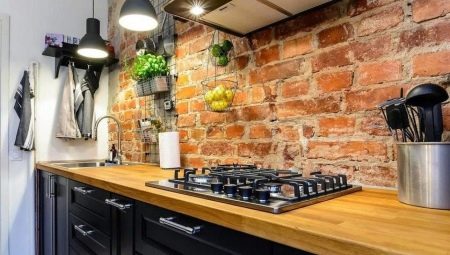
Choosing an apron for the kitchen, people are guided by many factors: appearance, practicality, ease of installation and acceptable cost. More and more often, at kitchen exhibitions or pictures in design magazines, you can see the design of the work wall in a brick look. This option has been in demand for decades. The interest is explained by the unusual features of this design.
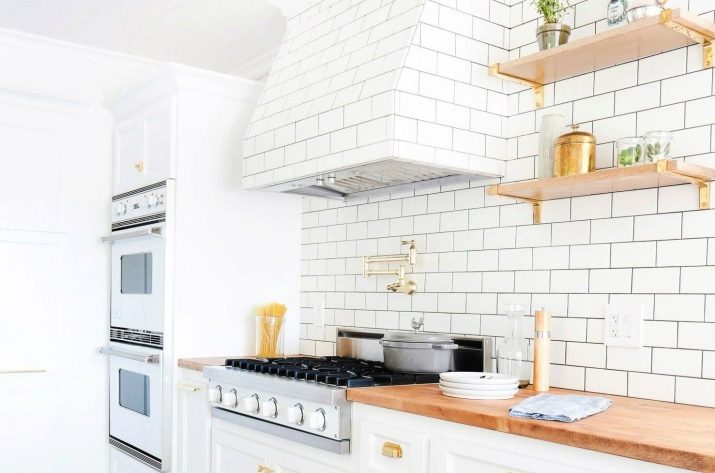
Peculiarities
The need for an apron for a kitchen unit is obvious. Here an important role is played by the protection of the wall surface, hygiene, ease of cleaning. And, of course, the apron serves as a kind of decoration for the kitchen, especially if it is correctly selected and harmoniously combined with the rest of the interior details.
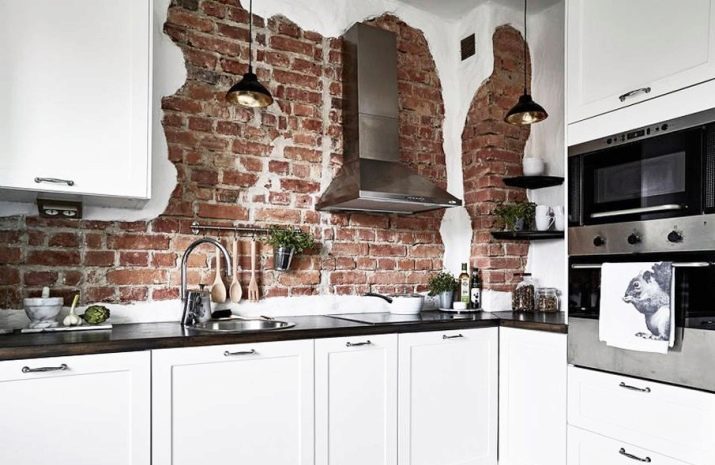
A brick apron has several important advantages.
- Fits easily into the interior of both classic and modern styles.
- Smoothes out irregularities and wall defects.
- Practical in everyday life, because you can choose a coating on which dirt will be less visible. Most of the modern materials used to decorate the kitchen are easy to clean.
- It has many options: by material, color, texture, etc.
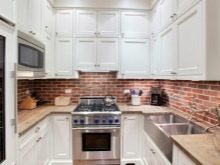
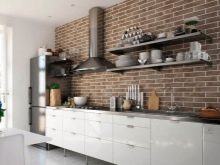
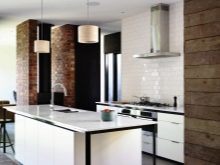
More detailed specifications such as strength, durability, resistance to external factors and availability are best evaluated based on a specific variety (depending on the method of production and material).
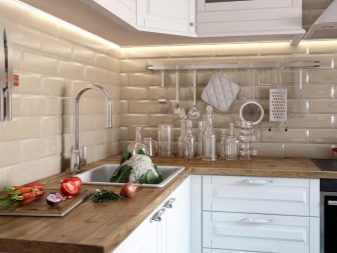
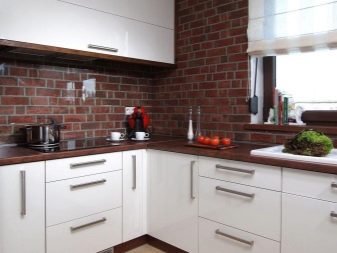
Types of materials
Of course, the work wall behind the kitchen unit may well be brick. Moreover, in some cases it does not even need to be created artificially, it is enough to leave the wall in the form in which it is. Brick is strong and durable.In addition, it has a unique texture and is variable in terms of color. However, it should be borne in mind that such a material is rather porous, which means that it will absorb not only splashes of various origins, but also odors. And scrubbing a rough brick wall won't be easy.
Therefore, the wall in its rough version is most often covered with more practical finishing materials.
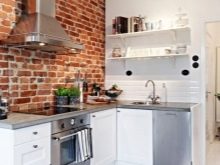
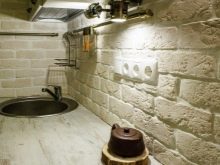
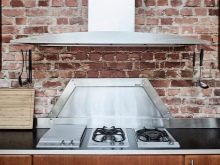
- Ceramic tiles ("hog") - the most common option. Of course, it only remotely resembles a brick - the tiled bricks look too neat. But the choice of colors here is much wider, there are matte and glossy options. Tiles can break or crack, but with careful handling, they will last for several years and retain their original appearance. And the tile wall is quite easy to wash and clean.
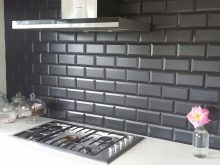
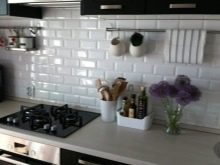
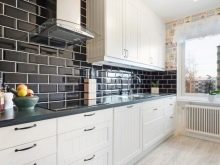
- Porcelain stoneware tiles similar in properties to ceramic. Among the few differences, one can note the increased strength and the method of production, as a result of which not only the top layer is painted, but the entire tile as a whole. Therefore, individual elements can either be coated with glaze or have a natural look, as close as possible to ordinary bricks.
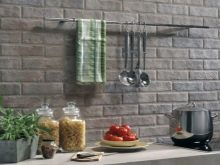
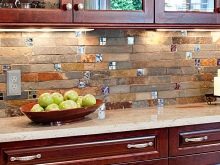
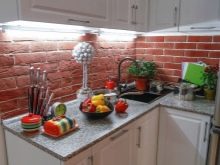
- Clinkers are much superior to ordinary tiles in terms of strength and wear resistance. Thanks to the special production method, such bricks look quite natural. There are smooth glazed tiles or embossed tiles (rough to the touch). You can pick up bright colored or natural colored bricks.
It is easier to care for a clinker apron if it is smooth, but even then it remains heat and moisture resistant. In addition to the rather high cost, such a tile material requires the involvement of specialists for installation.
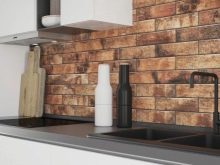
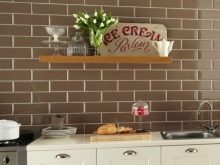
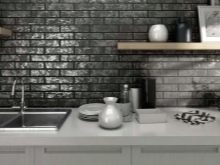
- PVC apron It is considered one of the most inexpensive imitation brick pavements. In this case, we are not talking about individual tiles, but about embossed panels that look like a brick wall. The panel is much easier to attach to the wall than tile materials, it is easier to replace it with a new one. Plastic can be washed well using gentle agents, but it has low strength and resistance to heat.
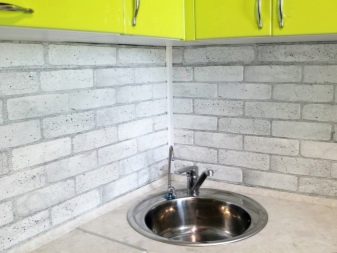
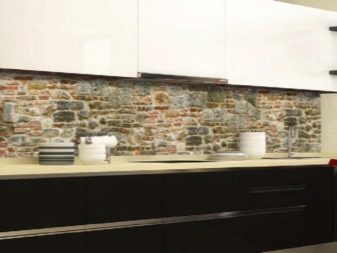
- Glass Panels - a modern version in which the image of brickwork is applied to the glass from the inside. Among the pluses, there is a good, realistic color rendition and mirror shine. The surface in this case will be flat, but it is even easier to clean it this way. And in terms of strength, tempered glass is in no way inferior to tiles. Installation is complicated by the weight and dimensions of the product, as well as the complexity of the mountings.
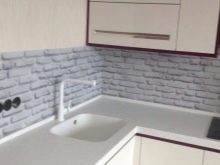
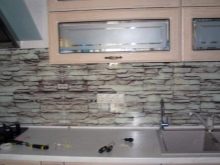
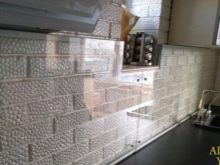
- MDF also often acts as a basis for wall panels, which can be used to decorate an apron. The top layer will be a film with imitation brickwork or an image with a transparent acrylic top layer.
Such a coating partially protects the panel from moisture, but may discolor or deform from overheating.
Most often, such an apron is chosen as a cheaper analogue of a glass one. But it is much easier to install it - you can do it on your own.
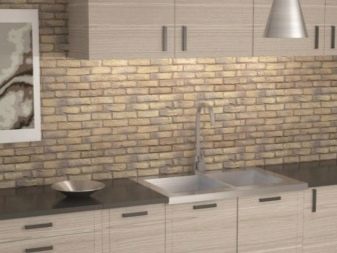
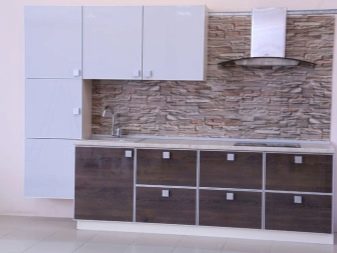
How to choose?
First you need to decide on the choice of material. A good kitchen apron should not only have an attractive appearance, but also be practical to use. It is almost impossible to appreciate the beauty of each apron - it is important to focus on your own taste.
But the most reliable are tiled coatings and glass panels.
In a limited budget, you can consider plastic panels.
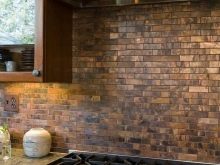
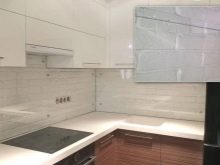
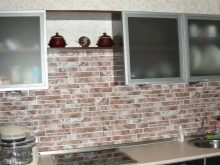
The next criterion is the installation method. Professional services require additional costs. Therefore, you can master the laying of tiles yourself or pay attention to wide, lightweight panels that are simply glued to the wall. First, you need to decide on the method of laying the tiles: traditional, offset, diagonally, blocks, etc.A narrow strip above the worktop, the space behind the hood, or the entire work wall to the ceiling can be finished with bricks.
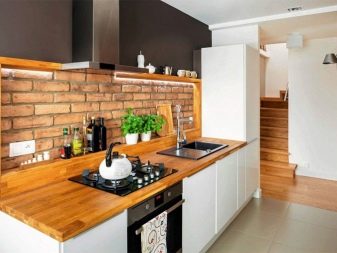
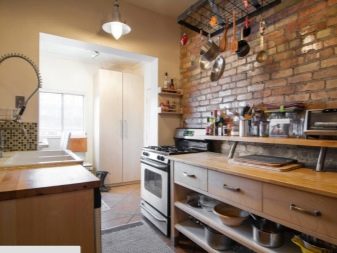
Calculation of the amount of material required it is better to produce in conjunction with a master or store consultant.
Tiles are purchased with a margin, and it is imperative to compare the color of bricks from different batches so that there are no discrepancies.
Wall panels are considered linear meters. With glass, the situation is more serious: it is usually cut, cutouts are made for sockets and fasteners in production.
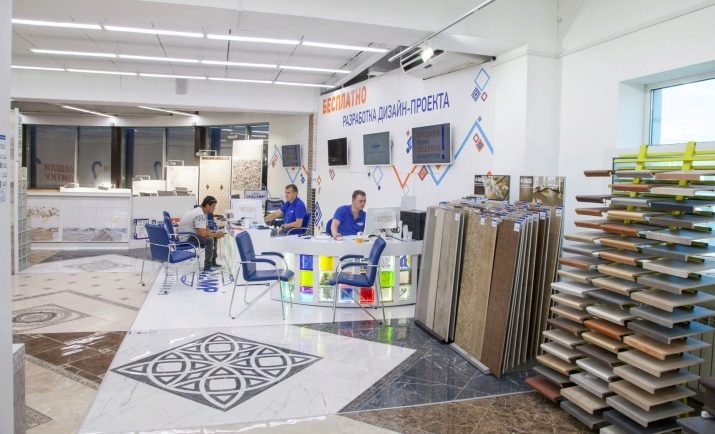
The cost of the material should be commensurate with the quality. Recently, buyers are increasingly paying attention to tiles from Germany, Italy or Belgium, because foreign brands are becoming a kind of synonym for reliability and good taste. But Russian manufacturers should not be written off either: they adopt Western technologies and produce products no worse and much cheaper than their foreign counterparts.


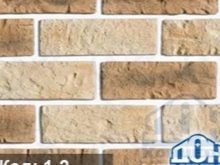
Beautiful examples in the interior of the kitchen
One of the most difficult questions in choosing a tile is color matching. At the same time, it is necessary that he not only please the owner, but also fit well into the general background. White is considered the simplest and most versatile option: it contains all the basic colors, reflects light well. Those close to it are also popular: gray, milky, beige, light coffee, etc. Brickwork of this color will be an excellent addition to a kitchen in any style.

If a monochromatic option seems boring to someone, you can pick up tiles of several similar shades and place them in a chaotic order.
Thus, you can experiment with the texture - dilute the smooth bricks with embossed ones. The main thing is that it looks unobtrusive and harmonious.
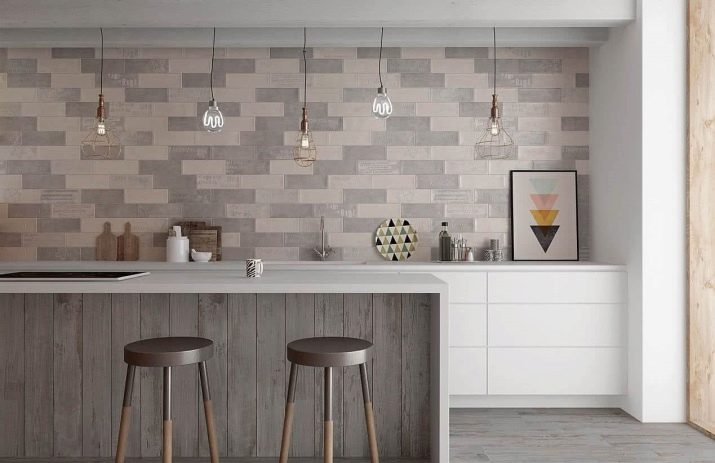
Sometimes it is important to use bricks of natural colors: light and dark brown, brown, gray. This is especially necessary for the interior, which emphasizes the connection with nature. Tiles in this case should look natural, without polishing and glaze. The colored version of the bricks is also often used: such glazed tiles can be matte or glossy. In this case, special attention is paid to the seams between the elements. The grout can be selected both in the color of the tile, and in neutral (white), and in rare cases, they use color and even contrast (for example, white on black).
It is now fashionable to focus on small details.
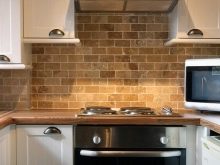
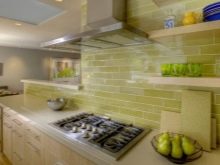
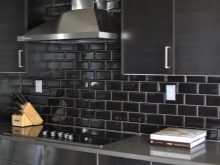
Besides the color, the shape of the tiles is important. To imitate brickwork, it is important to observe the rectangular shape of all elements. But in some cases, such an apron may look too perfect. Tiles with smooth edges and a smooth (and sometimes shiny) surface, laid in a deliberately strict order, look simple, but at the same time elegant.
Minimalism is one of the main trends in modern design.
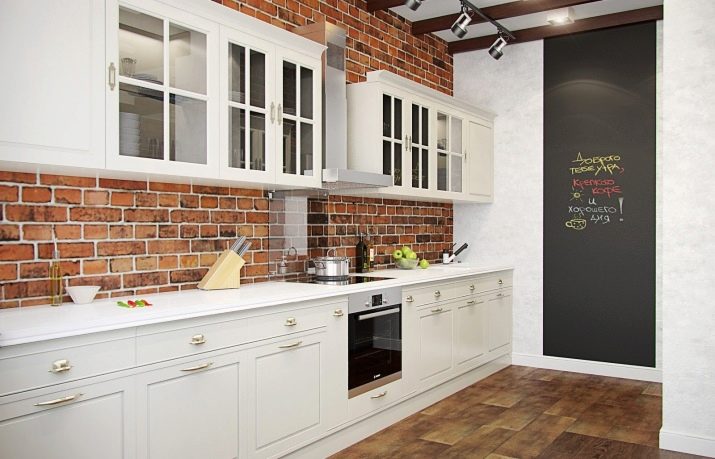

The features of choosing a brick apron for the kitchen can be found in the following video.








